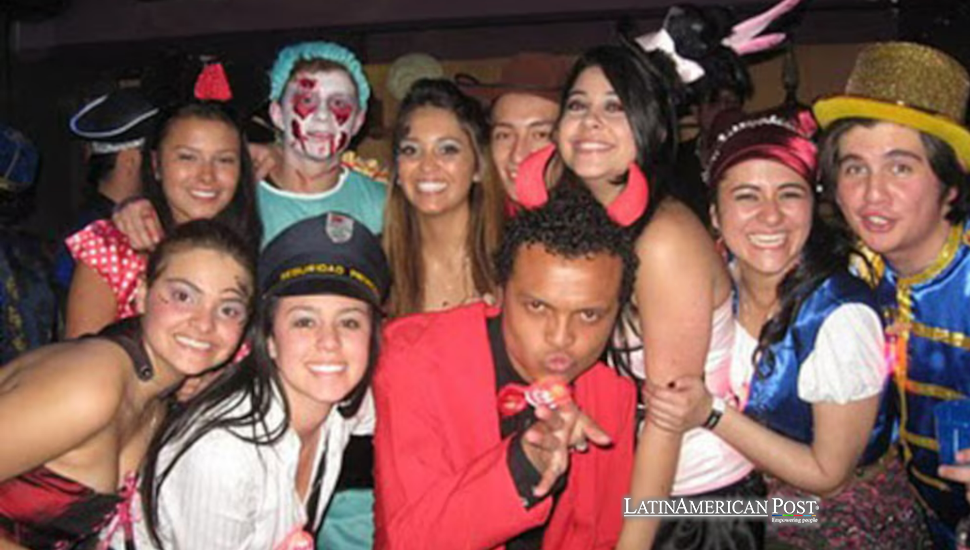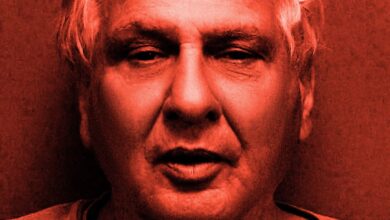Unraveling One of Colombia’s Most Perplexing True Crime Case: The Mystery of Luis Andrés Colmenares

When Luis Andrés Colmenares, a promising Colombian student, was found dead the morning after Halloween night in 2010, it sparked a national discussion about justice, privilege, and truth. The case captivated the entire country.
The Background of Luis Andrés Colmenares
Luis Andrés Colmenares Escobar, born on May 23, 1990, in Villanueva, La Guajira, Colombia, was the son of Oneida Escobar and Luis Alonso Colmenares and the younger brother of Jorge and Luis Esteban. He was known for his academic excellence, particularly in mathematics and science, and was a source of pride for his family. Colmenares enrolled at the Universidad de los Andes in Bogotá to pursue a degree in industrial engineering.
He was fluent in Spanish and English and was often described as friendly, popular, and charismatic—known to his friends as the “life of the party.” Hardworking, loyal, and sociable, those close to him remember his generosity, caring nature, and lively presence. In addition to academics, he was passionate about soccer. With a promising future and the support of his family, Luis’s life appeared bright with potential.
However, like many young people, he felt the pressure of balancing academic demands with a social life. Ultimately, those pressures led him into situations that would end tragically. Halloween night, October 31, 2010, marked a turning point with events that continue to raise questions and spark debate.
The Night of the Incident
On Halloween night in 2010, Bogotá was alive with festivities. Luis, dressed in a red devil costume, spent the evening with friends, including Laura Moreno and Jessy Quintero. Around 11 p.m., the group went to a nightclub in Bogotá’s popular Zona T nightlife district. After leaving the club around 3 a.m., the night took a tragic turn.
Accounts vary on what happened next. Laura and Jessy later claimed that, during an after-party snack, Luis abruptly ran off towards El Virrey Park, a well-known public space in Bogotá. The two said they attempted to follow him but soon lost sight of him amid the trees. They alerted a police officer nearby, telling him their friend had gone missing in the park.
Over the following hours, as Luis remained missing, his family and friends became increasingly concerned. What began as a night of celebration soon turned into a nightmare for those close to him.
The Search and Discovery
By November 1, Luis was still missing. His friends, family, and police searched El Virrey Park, hoping to find some trace of him. After two days of searching, on November 2, Luis’s body was discovered in a drainage canal in the park. He was found with injuries that the authorities initially suggested were consistent with an accidental fall, leading police to classify the death as a possible accident due to intoxication or misstep.
However, his family questioned this conclusion, feeling that the injuries were inconsistent with a mere fall. Determined to find the truth, Luis’s parents insisted on a deeper investigation.
The Investigation Takes a Turn
Following Luis’s discovery, a preliminary investigation concluded that he had likely fallen and hit his head, causing accidental death. His family, however, pushed for further investigation. They commissioned a second autopsy from Dr. Máximo Duque, an independent forensic expert and former director of Colombia’s forensic institute, who found evidence of injuries inconsistent with a fall, including fractures that suggested possible assault.
This conflicting autopsy report ignited public interest and led the authorities to reopen the case as a potential homicide. Witnesses, including José Wilmer Ayola, a homeless man, testified that he had witnessed an assault on Luis that night.
Ayola’s testimony claimed that Luis was attacked by a group of people, implicating Laura Moreno and Jessy Quintero as being involved or present during the incident. According to his testimony, Luis’s death was not an accident but the result of violence, casting suspicion on those who had been with him that night.
As media attention grew, the case became a national sensation in Colombia, with the public polarized over the question of whether Luis’s death was an accident or murder.
Unveiling New Evidence
New evidence emerged that cast further doubt on the original accident theory. Cell phone records contradicted Laura and Jessy’s accounts, placing them near the scene for longer than initially claimed. Ayola’s testimony painted a harrowing picture, describing an assault in which Luis was attacked by a group using weapons. However, his credibility was also questioned by the defense, who argued his statements were inconsistent and possibly motivated by media attention or external pressures.
Nevertheless, the combination of forensic evidence and witness testimony painted a troubling picture, suggesting that Luis’s death might have been more than an unfortunate accident. These details led to a trial that became one of Colombia’s most watched and polarizing court cases.
The Trial
The highly publicized trial involved Laura Moreno, Jessy Quintero, and Carlos Cárdenas, another individual accused in connection with Luis’s death. The prosecution argued that Luis had been assaulted, with evidence including Ayola’s eyewitness testimony, discrepancies in the initial autopsy, and cell phone data contradicting the defense’s timeline.
The defense argued against Ayola’s credibility and pointed out the lack of direct evidence tying their clients to an assault. They portrayed Laura and Jessy as innocent witnesses unfairly implicated in the case, maintaining that Luis’s death was accidental.
The trial captivated Colombians, with intense media coverage of every development. In December 2017, Laura and Jessy were acquitted of all charges due to a lack of evidence, while Carlos Cárdenas had been acquitted in 2014. For many, the verdict was unsatisfactory, sparking public debate over privilege and the integrity of Colombia’s justice system.
Media Frenzy and Public Opinion
The Colmenares case became a symbol of Colombia’s struggle with justice and equality, as the media sensationalized every aspect of the trial. Public opinion was deeply divided, with some seeing the accused as victims of a flawed legal process, while others believed Luis had been murdered and that the justice system had failed him.
Throughout the case, the media’s role in shaping public perception was evident, as sensational headlines and polarized coverage influenced how the public viewed both the accused and the judicial system. Social media further amplified these views, turning the case into a battleground over justice and privilege in Colombian society.
Verdict and Aftermath
The court’s decision to acquit Laura and Jessy left many Colombians questioning the fairness of the judicial process. Luis’s parents expressed disappointment, feeling that justice had not been served. The Colmenares case raised broader questions about inequality and access to justice in Colombia, with many seeing it as a symbol of the challenges faced by families seeking justice against the odds.
Also read: Argentina’s Menéndez Brothers: The Schoklender Case Amid Calls for Resentencing
For the Colmenares family, the fight for answers continues as they push for reforms to Colombia’s judicial system, hoping to prevent similar cases in the future. Luis’s tragic death remains a haunting reminder of the work still needed to build a fair and transparent justice system in Colombia.





